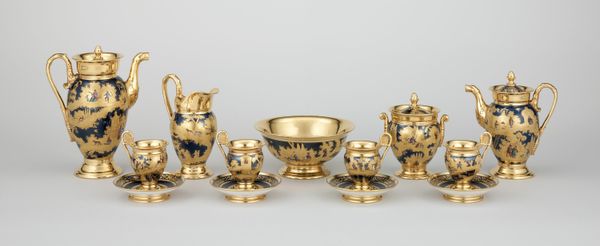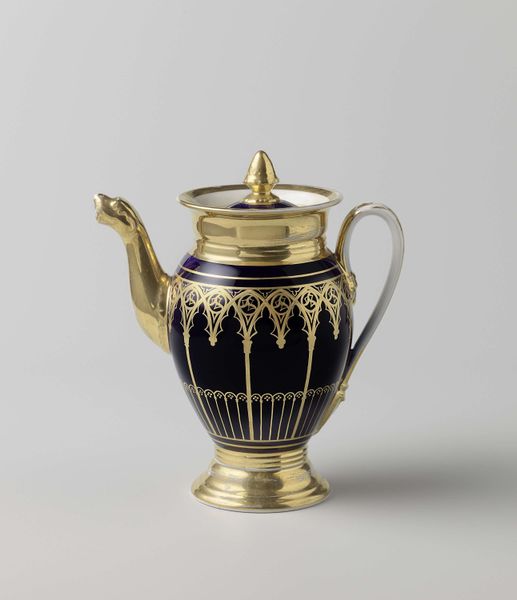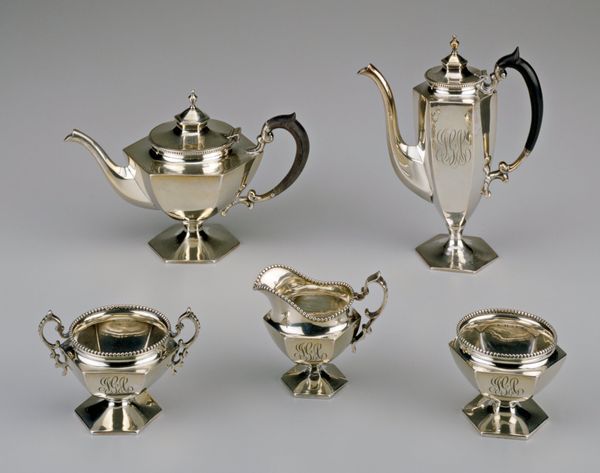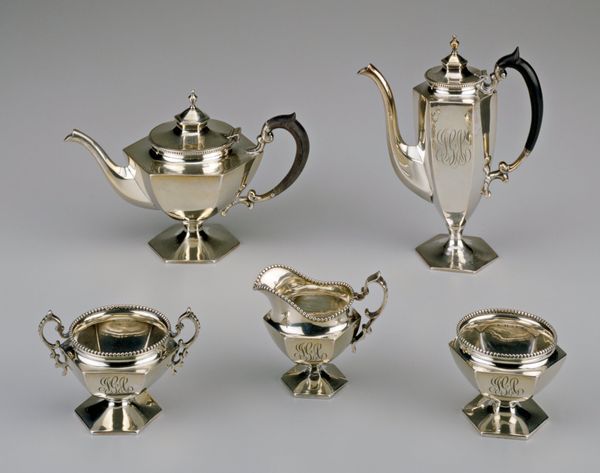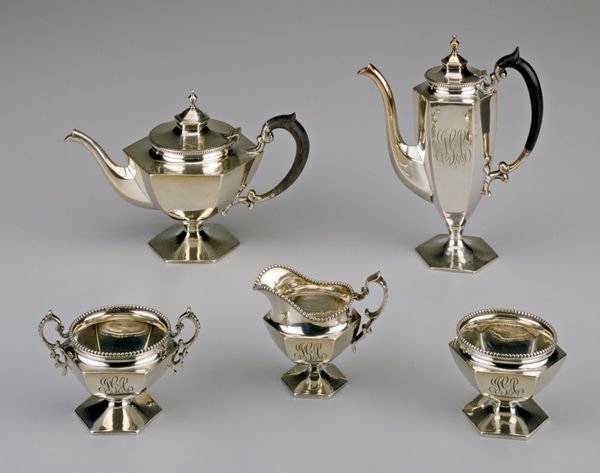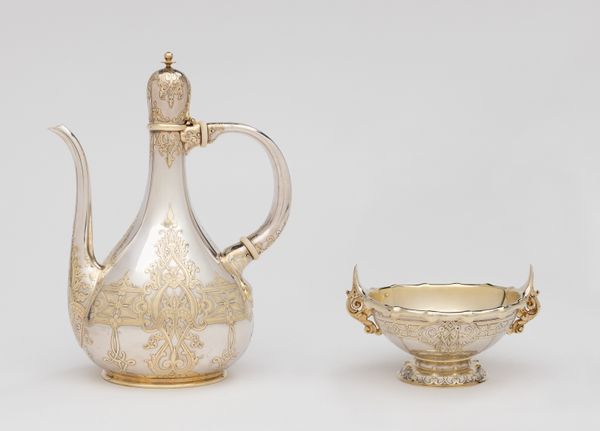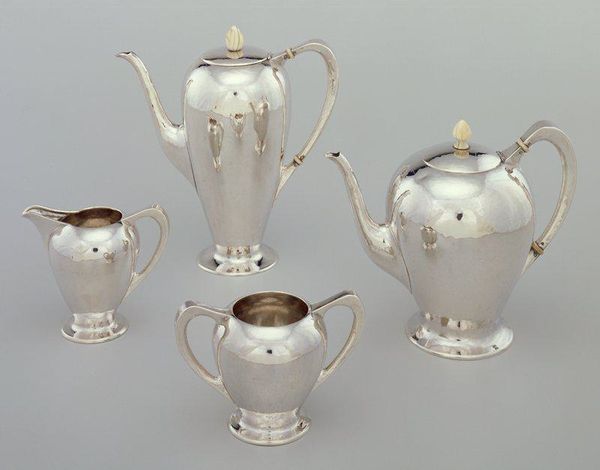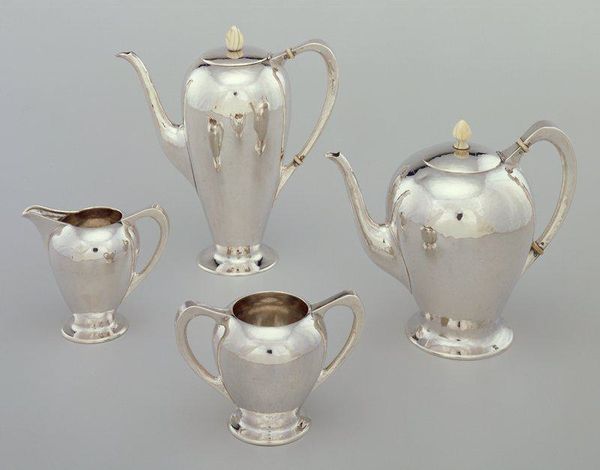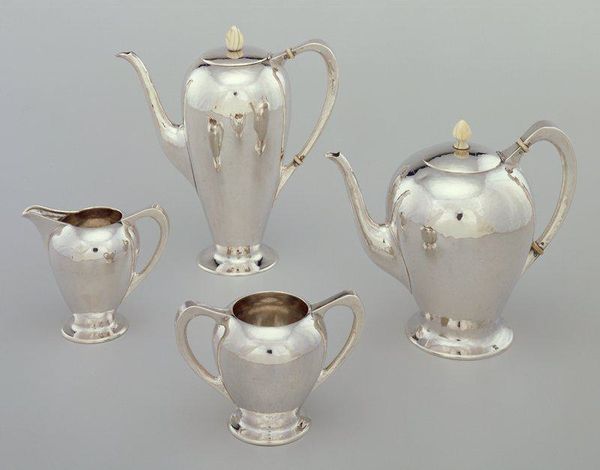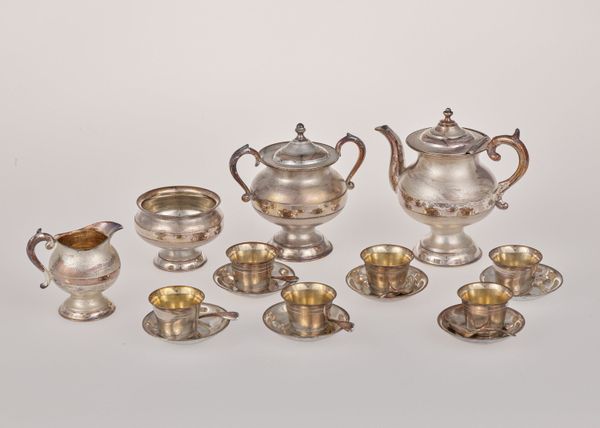
gold, ceramic, porcelain
#
gold
#
ceramic
#
porcelain
#
decorative-art
Copyright: Rijks Museum: Open Domain
Curator: This decorative ceramic coffee and tea service is believed to have been produced around the 19th century by the porcelain manufactory known as "Perche." My immediate impression is how luxurious these pieces feel—deep blues set against striking gold ornamentation. Editor: It's a fascinating confluence. I’m curious, what significance would a “gothic arcade” design hold on tableware from this period? I want to better understand the significance of such motifs being applied to, presumably, an upper class ritual. Curator: The Gothic revival was in full swing in the 19th century, tapping into notions of craftsmanship, and a romantic, slightly nostalgic view of the past. This service, with its stylized pointed arches, becomes an everyday expression of grander architectural ideals. It transforms something commonplace, like coffee or tea, into a ritual steeped in history and tradition. Editor: So the gothic arch, once an integral part of sacred spaces, is miniaturized, applied to everyday objects—domesticated, in a sense. Porcelain and gold themselves indicate elite status through expensive material sourcing. What would have been the context in which something like this been crafted and used? Curator: Most likely, it was intended for a well-to-do household looking to telegraph a certain level of refinement and perhaps even intellectual interest in design history. To drink from these cups is to participate in a revivalist moment and to perform sophistication for others. Editor: The level of labor must be huge to achieve that level of gilt detail, likely involving teams specializing in each component, from shaping to glazing to painting. The cobalt blue glaze contrasts sharply with brilliant gold in the form of delicate Gothic tracery, demanding extreme precision during fabrication to create something with such strong visual impact. How easily would these break? Curator: Delicate use is almost expected of it. But if these objects survive, what survives is cultural memory: our relationship to certain stylistic affectations like this reinterpretation of the gothic vocabulary—pointing to its own unique historical awareness. Editor: Exactly, material survival tells part of the story. Knowing these processes encourages you to contemplate all the skilled hands and specific contexts involved. You gain such a deeper appreciation for both object and all the individuals whose labor allowed its emergence. Curator: This piece acts as a perfect microcosm through which to understand our present-day relationship to objects, history, and beauty. Editor: Precisely! The closer we examine it the clearer the echo across material production and our enduring aesthetic appetites rings out.
Comments
No comments
Be the first to comment and join the conversation on the ultimate creative platform.
